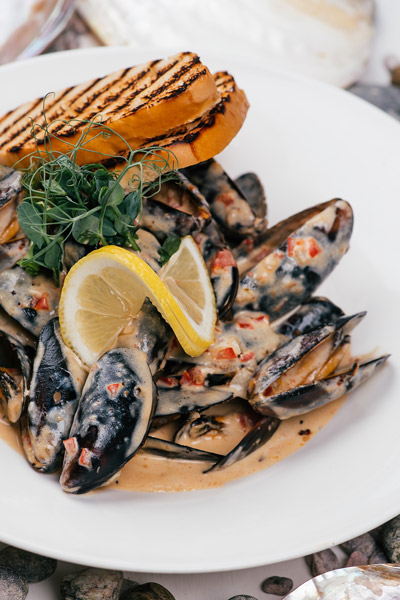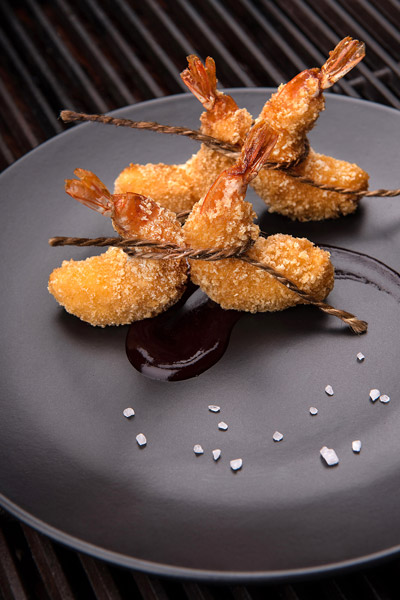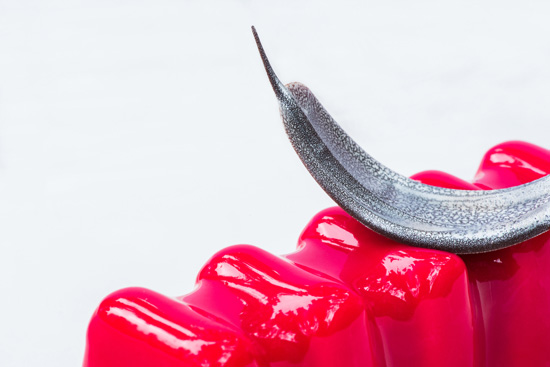Why do we use alcohol in our dishes?

Photo: Nataliya Nagorna / Varadero Restaurant
Humanity began crafting fermented beverages back in the Neolithic era and recognized the benefits of alcohol. People became so engrossed in purposeful production of alcoholic beverages and stopping them was impossible. When a dish is being prepared in the kitchen and there’s an alcoholic beverage nearby, people will inevitably try to combine them. Sooner or later, it happens. Dishes with the addition of white, red, or rosé wine have been known from ancient times to the present day. Dishes with beer are a classic of German cuisine and many other countries. Strong alcohol is added to dishes made from meat, fish, seafood, various types of baked goods, and desserts. But for what purpose?

Photo: Nataliya Nagorna / Trum Restaurant
Professional chefs confidently state that alcoholic beverages enhance the taste and help the aromas of the dish fully unfold. Alcohol becomes a kind of conductor of chemical processes. Its molecules interact with fat and water, transferring aromas and flavors from the liquid medium to the dense one.
In meat dishes (like the famous French Boeuf Bourguignon), red wine is added. And the dish Coq Au Vin made from rooster cannot be prepared without red wine. They are made for each other. Some types of berry sauces are enhanced with whiskey. White wine is added to sauces for fish and seafood, red wine for meat. Do you remember that wine for a dish is selected according to its sauce?
When the whole family is at the dining table, can such dishes be served to children? More often than not, the answer is positive (except for sauces). Alcohol evaporates quickly during cooking, and its beneficial effects remain. White wine can be used in dishes with fish and seafood. This adds acidity. Fish can be marinated with white wine. It produces an excellent taste, and it prevents the development of undesirable microorganisms.
When you want the dish to have the scent of wood, brandy is added. Beer gives a rich bread taste. This is a classic of German cuisine. Dishes with the addition of beer are also often prepared in the Czech Republic, where brewing traditions are very strong. Pork knuckle cooked with craft barley beer according to a German recipe. This method of preparation makes the meat soft, tender, and easy to separate from the bone.

Photo: Nataliya Nagorna / Ribeye Restaurant
For fish soup, adding vodka is both a tradition and a benefit. Strong alcohol overrides the smell of river and sea fish, enhances the taste of fish broth, and makes the broth more transparent. According to the recipe, 1-2 tablespoons of strong alcohol (often vodka or moonshine) are added to a pot of rich broth. This recommendation from chefs dates back to ancient times when it served as a disinfectant. In the modern world, the acute need for this from a medical standpoint has diminished, but from a gastronomic perspective, it has endured. It unquestionably makes the dish tastier, better, and the taste of fish broth is intensified by the aroma of freshly cut herbs. There are recipes with the addition of dry champagne to fish soup, but this is more of an exception than a rule. Strong alcohol is used more frequently.

Photo: Nataliya Nagorna / Beer Garden Restaurant
To better prepare poultry after plucking, it is lightly sprayed with strong alcohol and ignited. Not to make the fire brighter, but to give it a more intense flavor. Wine can then be added during marination. The acidic environment helps the meat or poultry absorb all the benefits and aroma of the spices.
And what about seafood? Of course, they also love alcohol. Mussels, scallops, clams, shrimp, and squid are prepared with the addition of white wine. Wine is a mandatory component of quality pasta, risotto with seafood, and paella. White wine is added to “Bisque” soup. White wine and evaporated brandy (to enhance the aroma) are added to lobster soup. In such an exquisite lobster cream soup, prepared according to the chef’s secret recipe, wine and brandy were incorporated.

Photo: Nataliya Nagorna / Ribeye Restaurant
With meat, poultry, fish, and seafood, alcohol has been a longstanding and successful companion. Adding beer can enhance the batter for fish, meat, seafood, and vegetables. Sometimes, vodka is added for making pancakes; they will be more golden and delicious. So, does alcohol work for dough?

Photo: Nataliya Nagorna / Trum Restaurant
How do bakers and pastry chefs feel about using alcohol in the kitchen? They use alcohol to soak sponge cakes, for example, with rum. Alcohol is added to the dough itself, making it fluffy and aiding in its rising. It also acts as a preservative and helps extend the shelf life of baked goods. Some types of panettone and strudel are baked in advance and should be edible on holidays. Candied fruits and raisins for them are soaked in brandy or rum.
Beer can be part of the dough for making pies, cookies (but only not yeast dough). Vodka is also added to the dough. When baking such pastries, the dough becomes infused with air, making it fluffier, and the cookies become crispier.
The famous “Rum Baba” is made with alcohol. It has a rich history. There are several versions of the origin of “Baba Au Rhum.” According to one legend, it began to be made in the lands of Ukraine, Poland, and neighboring countries. It was named after the shape of a woman’s skirt, “baba.” According to another version, an Italian chef brought the dessert to Poland. But since the name “baba” is still Slavic, the story about Eastern Europe sounds more plausible… According to another version, Polish King Stanisław Leszczyński named the dessert after his favorite tale – Ali Baba.
In any case, the “baba” recipe ended up on the king’s table. It was shaped like a mushroom. By chance or not, it acquired an alcoholic destiny. It was soaked with Madeira and, together with the king’s daughter Marie Leszczyńska, “moved” to France. There, it was soaked with rum, flavored, and nuts were added.
In the 18th century, Jean Savarin made this dessert incredibly popular. Now it was a conical ring-shaped cake. It was called savarin (in honor of the gourmet) and prepared differently.
Together with the descendants of Marie Leszczyńska, the dessert in its new form reached Sicily, Naples, and became a pastry symbol of the city. Rum Baba was soaked in red wine, rum, spices, covered with jam, icing, and fruits…
The pastry history is closely intertwined with alcohol experiments. The achievements of Italians, French, Spaniards, Germans in pastry shops and on ordinary kitchen tables are truly remarkable! For instance, the dessert Sabayon is prepared with the addition of alcohol (attributed to Bartolomeo Scappi). It includes still or sparkling wine and citrus zest. Amaretti almond cookies are made with Amaretto liqueur. Italian Génoise biscuits are sprinkled with liqueur, and Caprese chocolate cakes have liqueur added to them. Tiramisù also features alcohol. Ladyfingers are soaked not only in coffee but also in alcohol (rum, Amaretto, brandy, or Marsala).

Photo: Nataliya Nagorna / Bize Pastry Shop Chain
A touch of cognac can make shortcrust and sponge dough softer and more crumbly. If you add a bit of strong alcohol when making homemade ice cream, it won’t freeze completely, retaining a creamy texture. Alcohol is added to cake frosting. Just remember the Black Forest cake. Its layers were always soaked in cherry liqueur.
Alcohol is a volatile substance. Sometimes, when cutting a dessert, you can immediately smell alcohol. And that’s… the alcohol. Sponge cakes, cupcakes, jellies based on alcohol. And what delicious candies can be made with various liqueurs! Chocolate with “high proof” inside, featuring citrus, fruit, or berry notes. Yes, this is not entirely for children. Such sweets have always been considered an exquisite gift. Can you resist a box of chocolates with cherry liqueur, chocolate candies with whiskey, coffee liqueur, plum, or strawberry in chocolate with liqueur?
The quality of alcohol for culinary tasks also matters. This should be taken into account. It’s better to use aromatic wines with fruity notes. Wine is also used for making jam. With such a recipe, you don’t need much sugar, acidity, and preservation.
Effects in the gastronomic industry are also undeniable. During flambéing, alcohol imparts a caramel taste to fruits. For example, pear in wine with ice cream. The fruit quickly absorbs everything it has been “given.” For flambéing, alcohol with a strength of 40 degrees is used: whiskey, rum, vodka, strong orange liqueur, brandy. A common method of flambéing is with Cointreau.

Photo: Nataliya Nagorna / Restaurant “Trum”
Chocolate desserts are also often drizzled with strong alcohol and set on fire. Chocolate melts, revealing the “petals” of the dessert inside. Moreover, this creates a festive mood, which is also crucial in the culinary sphere. After all, we sit down at the table not only to satisfy hunger but also to experience aesthetic pleasure, new impressions, to taste the flavor of life.

